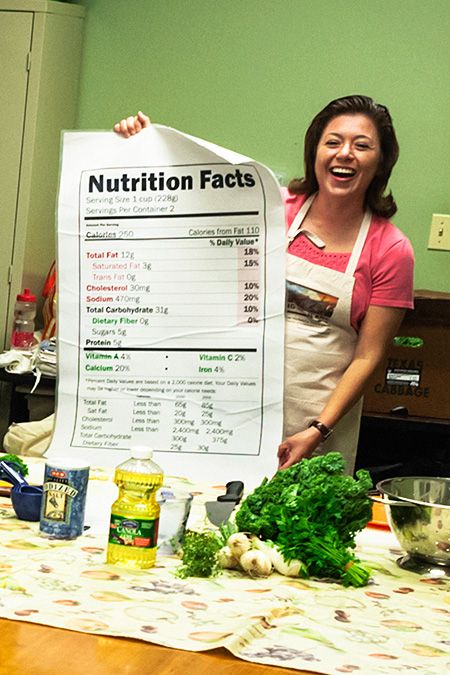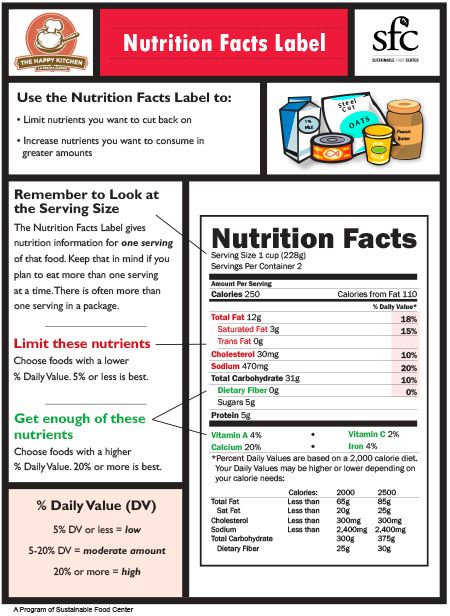Taking some extra time at the store to read the labels of packaged foods can help you reap health rewards for both you and your family. When looking at the Nutrition Facts Label, you’ll notice a percentage listed next to each micro- or macronutrient. This is called the Daily Value. It’s based on the “average” diet of 2000 calories per day. (That being said, a nursing mom or a college athlete will probably need more calories whereas a child will need less calories.)
Choose foods with less:
Fat, cholesterol, sodium and sugars
Choose foods with more:
Fiber, calcium, vitamins and iron.
Focusing on the daily value percentage is the quickest way to tell if an item is a better choice. Just remember that 5% is low and 20% is high. So, let’s say we are looking at a can of vegetable soup. The sodium on the content reads 18%. That would be near 20%, so it’s high. Also, take into consideration that the daily value is listed per serving. So, if the can of soup contains two servings then the total sodium percentage would be 18% multiplied by two (36%!!) if you ate the entire can. I would probably look for an alternative soup.
You will notice that sugars do not contain a daily value. That is because sugars are not considered necessary and there is no agreed upon percentage of intake per day. That being said, new Dietary Guidelines are being discussed right now and we may see a recommended amount of sugars to consume going forward.
So to recap: 5% is low and 20% is high. If you can keep this in mind, it will make things much easier (and hopefully healthier!).
And lastly, the *best* way to eat a healthy diet? Choose items that do not come with Nutrition Facts Labels, like fresh vegetables, fruits, whole grains, beans, legumes, meat, poultry and fish. And maybe some dairy if it agrees with you!


